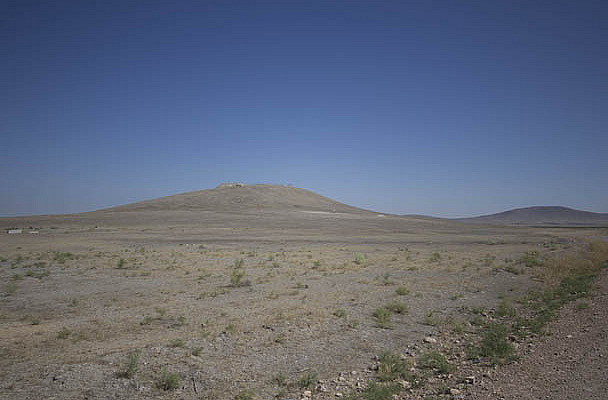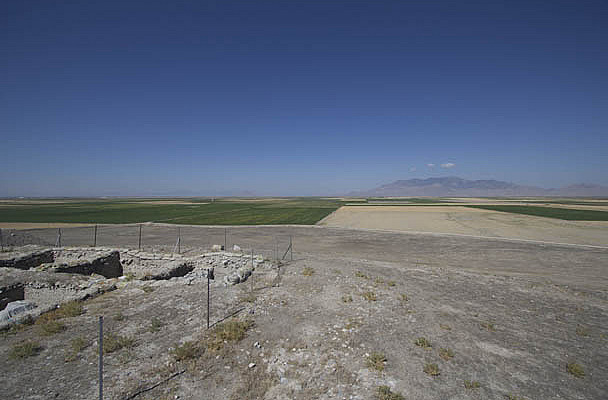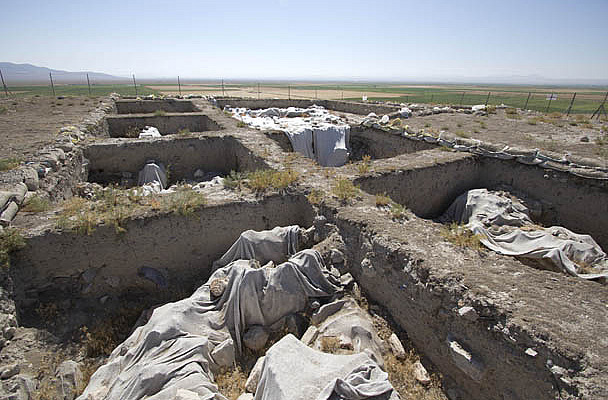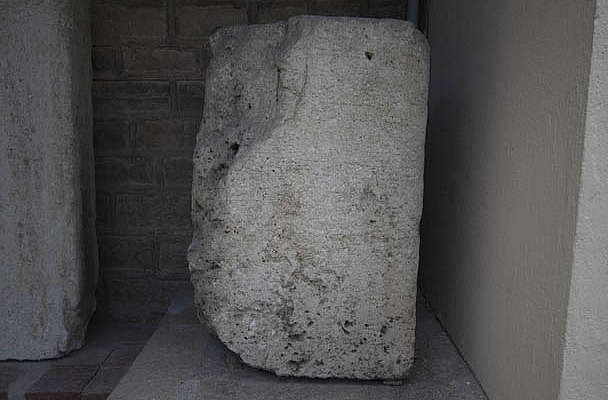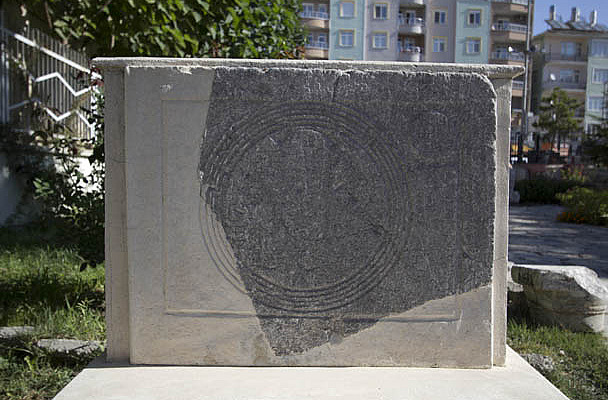Historical Background
Derbe was a city in central Asia Minor (modern Turkey) near Lystra and Iconium along the King's Road that went from the east to the west across the country. Derbe is not a historically prominent city and there are scant references in ancient literature to the city. It is known that the area was occupied as early as the Hellentistic period (1st-3rd century B.C.) and well into the Roman (1st century B.C. - 3rd century A.D.) and Byzantine periods (3rd century - 9th century A.D.).
Strabo (64/63 B.C. – c. 24 A.D.), the famous Greek geographer, mentions Derbe as the headquarters of a local tyrant Antipater Derbaetes (meaning “of Derbe”), who was also ruler of the nearby area of Laranda. Antipater of Derbe was also known to be good friends with Cicero (106 B.C. – 43 B.C.), the Roman philosopher and politician. But, Anipater's reign of Derbe ended when King Amyntas of Galatia attacked and killed him and took all his possessions and land. King Amyntas began to build a wall around Derbe but was soon ambushed and killed by the Cilicians in 25 B.C. for invading their land (Geograph. 12.6.3). At that point, Derbe likely became a part of the Roman province of Galatia. However, it is also possible that Derbe was already included as part of the Cilician region ruled by Antiochus IV of Commagene. There are no historical records that indicate the specific territories between Cilicia and Galatia. Derbe might have become part of the protected kingdom of Antiochus between 41 – 37 B.C. when the area of Laranda was transferred to him. But, the exact boundaries of the provinces were known to shift at different political periods in the Roman Empire and it is difficult to accurately determine when Derbe was part of which region at different times.
Furthermore, Derbe was known to play an important role in the region of Galatia as it was the last city on the road leading from southern Galatia to the sast. Thus, it was here that commerce entering the province had to pay custom dues for crossing the border. And thus, Strabo refers to Derbe as a limen (“customs station”) for the kingdom.
From coins found in the 2nd century A.D., Derbe was known to be called Claudio-Derbe (“Claudioderbe”) in honor of Emperor Claudius (41 – 54 A.D.). This name implied that Derbe was conferred with considerable importance and prosperity and was known to be a supporter of Rome. But Derbe did not have the independence as a Roman colony like Antioch of Pisidia, Iconium, or Lystra.
A Christian community was known to be thriving in Derbe in the late 4th century A.D. as a Bishop Daphnus is recorded as attending the Council of Contantinople (381 A.D.). Also, a Bishop Michael of Derbe was known to be in Derbe in the 4th century A.D.
Archaeological Significance
Derbe remains for the most part not excavated. Visitors will find themselves at a large mound in the middle of a valley. A small part of the tel has been excavated in recent years. It reveals a series of terrace style houses and a larger structure, which according to specialists, resembles an early church building (see http://www.biblicalarchaeology.org/daily/news/derbe-excavations-explore-pauline-site/).
Aside from the building ruins at Kerti H�y�k (Derbe tel), a 4th century A.D. inscription was found in the area in 1956 that mentions “the most God-loving Michael, bishop of Derbe”. Besides this, another inscription dated 157 A.D. was found that mentions “the gods of Derbe” and contains a dedication by the council and the people of Derbe honoring Emperor Antoninus Pius. The inscription contains the name Derbe but the part of the inscription prior to the word “Derbe” has been broken, and therefore it is presumed to read “Claudio-Derbe”, the name that appears on Derbe coinage from 2nd century A.D.
Biblical Significance
After the traumatic experiences at Lystra where Paul got stoned and left for dead, he and Barnabas decided to travel to near-by Derbe and preached the gospel there also (Acts 14:20-21). The only description given about the effect of Barnabas and Paul's visit to Derbe was that they “made many disciples there.” This statement implies that the testimony of the good news of Christ was well received by many and that Paul and Barnabas brought many souls to Christ in that city.
Derbe is also mentioned as part of Paul's second missionary journey but nothing is said regarding his visit to the city (16:1). Also, at the beginning of his third missionary trip, Paul mentions traveling back through the central region of Asia Minor: “After spending some time in Antioch [of Syria], Paul went back through Galatia and Phrygia, visiting and strengthening all the believers” (18:23). As part of his missionary efforts, one person from Derbe is named in particular – Gaius. On either his first or second missionary visit to Derbe, Paul won Gaius to the Lord, and Gaius is noted as being one of the disciples who ended up accompanying Paul on at least part of his third missionary journey (20:4).






